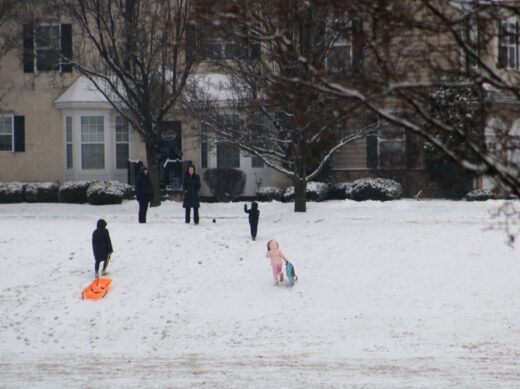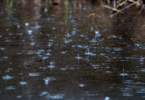By Alexandria Johnson, Purdue University
The thought of snow can conjure up images of powdery slopes, days out of school or hours of shoveling. For millions of people, it’s an inevitable part of life – but you may rarely stop to think about what made the snow.
As a professor of atmospheric and planetary sciences, I’ve studied how ice crystals floating in the sky become the snow that coats the ground.
It all starts in the clouds.
Clouds form when air near the Earth’s surface rises. This happens when sunlight warms the ground and the air closest to it, just like the Sun can warm your face on a cold winter day.
As the slightly warmer air rises, it cools – and the water vapor in that rising air condenses to form liquid water or water ice. From that, a cloud is born.
Endless pathways
When temperatures are well below freezing on the ground, the clouds are primarily made of water in the form of ice. Under 32 degrees Fahrenheit – that’s zero degrees Celsius – the frozen water molecules arrange themselves into a hexagonal, or six-sided, crystalline shape. As ice crystals grow and clump together, they become too heavy to stay aloft. With the help of gravity, they begin to fall back down through and eventually out of the cloud.
What these ice crystals look like once they reach land depends on the temperature and humidity of the atmosphere. As the humidity – or the amount of water vapor in the cloud – increases, some of the ice crystals will grow intricate arms at their six corners. That branching process creates what we think of as the characteristic shapes of snowflakes.
No two ice crystals take the same path through a cloud. Instead, every ice crystal experiences different temperatures and humidities as it travels through the cloud, whether going up or down. The ever-changing conditions, combined with the infinite number of paths the crystals could take, result in a unique growth history and crystalline shape for each and every snowflake. This is why you’ve likely heard the saying, “No two snowflakes are exactly alike.”
Many times, these differences are visible to the naked eye; sometimes a microscope is required to tell them apart. Either way, scientists who study clouds and snow can examine a snowflake and ultimately understand the path it took through the cloud to land on your hand.
Liquid water as glue
When snow falls from the sky, you don’t usually see individual ice crystals, but rather clumps of crystals stuck together. One way ice crystals aggregate is through what’s called mechanical interlocking. When ice crystals bump into each other, crystals with intricate branches and arms intertwine and stick to others.
This mechanism is the main sticking process in cooler, drier conditions – what people call a “dry snow.” The result is a snow perfect for skiing, and easily picked up by the wind, but that won’t hold together when formed into a snowball.
The second way to stick ice crystals together is to warm them up a bit. When ice crystals fall through a region of cloud or atmosphere where the temperature is slightly above freezing, the edges of the crystals start to melt. Just a tiny bit of liquid water allows ice crystals that bump into each other to stick together very efficiently, almost like glue.
The result? Large clumps of ice crystals falling from the sky, what we call a “wet snow” – less than ideal for hitting the slopes but perfect for building a snowman.
Snow formed in clouds typically reaches the ground only in winter. But almost all clouds, no matter the time of year or location, contain some ice. This is true even for clouds in warm tropical regions, because the atmosphere above us is much colder and can reach temperatures below freezing even on the warmest of days. In fact, scientists who study weather discovered that clouds containing ice produce more rain than those that don’t contain any ice at all.









